Login
Registration enables users to use special features of this website, such as past
order histories, retained contact details for faster checkout, review submissions, and special promotions.
order histories, retained contact details for faster checkout, review submissions, and special promotions.
Forgot password?
Registration enables users to use special features of this website, such as past
order histories, retained contact details for faster checkout, review submissions, and special promotions.
order histories, retained contact details for faster checkout, review submissions, and special promotions.
Quick Order
Products
Antibodies
ELISA and Assay Kits
Research Areas
Infectious Disease
Resources
Purchasing
Reference Material
Contact Us
Location
Corporate Headquarters
Vector Laboratories, Inc.
6737 Mowry Ave
Newark, CA 94560
United States
Telephone Numbers
Customer Service: (800) 227-6666 / (650) 697-3600
Contact Us
Additional Contact Details
Login
Registration enables users to use special features of this website, such as past
order histories, retained contact details for faster checkout, review submissions, and special promotions.
order histories, retained contact details for faster checkout, review submissions, and special promotions.
Forgot password?
Registration enables users to use special features of this website, such as past
order histories, retained contact details for faster checkout, review submissions, and special promotions.
order histories, retained contact details for faster checkout, review submissions, and special promotions.
Quick Order
PathPlusTM GLUL / Glutamine Synthetase Antibodies
GLUL (GS) belongs to the glutamine synthetase family and functions to catalyze the synthesis of glutamine from glutamate and ammonia in an ATP-dependent reaction. This protein plays a role in ammonia and glutamate detoxification, acid-base homeostasis, cell signaling, and cell proliferation. Glutamine is an abundant amino acid, and is important to the biosynthesis of several amino acids, pyrimidines, and purines. Mutations in this gene are associated with congenital glutamine deficiency, and overexpression of this gene was observed in some primary liver cancer samples. GLUL antibodies can be used in a panel with HSP70 and GPC3 antibodies to distinguish hepatocellular carcinoma (at least two out of three positive) from nonmalignant lesions. In immunohistochemistry of normal tissue, GLUL has cytoplasmic positivity in adipocytes, glial cells, macrophages and hepatocytes in multiple tissues, including the brain, thyroid, lung, liver, pancreas, intestine, bladder, breast and reproductive organs.
References: Hepatology. 2007 Mar;45(3):725-34, PMID: 17326147; J Hepatol. 2009 Apr;50(4):746-54: 19231003
6 PathPlusTM Antibodies
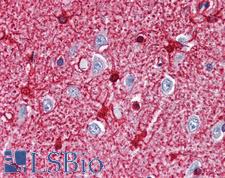
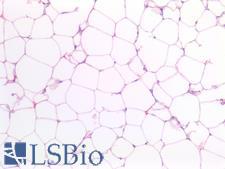
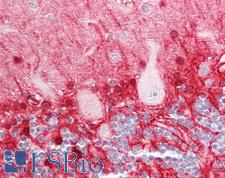
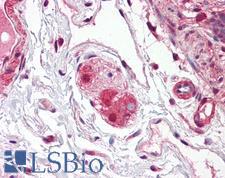

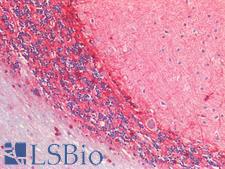
☰ Filters
Products
Antibodies
(6)
Type
Primary
(6)
Target
GLUL / Glutamine Synthetase
(6)
Reactivity
Human
(4)
Mouse
(1)
Rat
(2)
Sheep
(1)
Application
IHC
(3)
IHC-P
(6)
WB
(4)
ELISA
(2)
ICC
(1)
IF
(1)
Host
rabbit
(4)
mouse
(2)
Product Group
PathPlus Cancer
(4)
PathPlus Cancer Pathology
(6)
Isotype
IgG
(1)
IgG1,k
(1)
IgG2a
(1)
Clonality
monoclonal mc
(2)
polyclonal pc
(4)
Clone
AT8D7
(1)
GS-6
(1)
Format
Unconjugated
(6)
Epitope
aa301-350
(1)
Publications
No
(5)
Yes
(1)

Cancer Pathology
Cancer
GLUL / Glutamine Synthetase Mouse anti-Sheep Monoclonal (GS-6) Antibody
Sheep, Rat, Human
ELISA, IHC, IHC-P, WB
Unconjugated
50 µg/$545

Cancer Pathology
Cancer
GLUL / Glutamine Synthetase Mouse anti-Human Monoclonal (AT8D7) Antibody
Human
ELISA, ICC, IF, IHC-P, WB
Unconjugated
100 µl/$375

Cancer Pathology
Cancer
GLUL / Glutamine Synthetase Rabbit anti-Human Polyclonal (aa301-350) Antibody
Human
IHC, IHC-P, WB
Unconjugated
100 µl/$375

Cancer Pathology
Cancer
GLUL / Glutamine Synthetase Rabbit anti-Human Polyclonal Antibody
Mouse, Rat, Human
IHC, IHC-P, WB
Unconjugated
50 µl/$375

Cancer Pathology
Fast Shipping
GLUL / Glutamine Synthetase Rabbit anti-Human Polyclonal Antibody
IHC-P
Unconjugated
50 µg/$395

Cancer Pathology
Fast Shipping
GLUL / Glutamine Synthetase Rabbit anti-Human Polyclonal Antibody
IHC-P
Unconjugated
50 µg/$395
Viewing 1-6
of 6
product results











